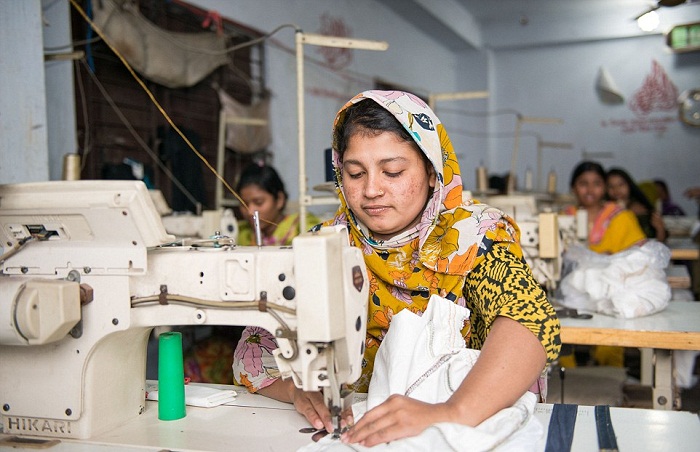While the factories mainly make clothes for the local and Indian market, they also supply well-known and established international brands through subcontracts, which making it difficult for companies to know exactly where all their clothes are coming from.
Photographer Claudio Montesano Casillas has revealed both the shocking lack of safety controls inside some of Bangladesh`s unregulated clothes factories as well as the grueling routines of the children that work there.
Casillas visited the factories at first by accident as part of an `Old Dhaka` tour, but was fascinated by the conditions.
An informal factory could comprise of a room with 15 sewing machines and are often without emergency exits, fire safety plans or extinguishers as they are not subjected to the nation wide fire and buildings safety assessments.
The children, who don`t have time to go to school, are tasked with a huge range of jobs from embroidery and sticking on sequins to dyeing fabric and machine cleaning.
It is thought there are about a million children aged 10 to 14 working as child labourers in Bangladesh, according to UNICEF - but the number is far higher when the age band is expanded.
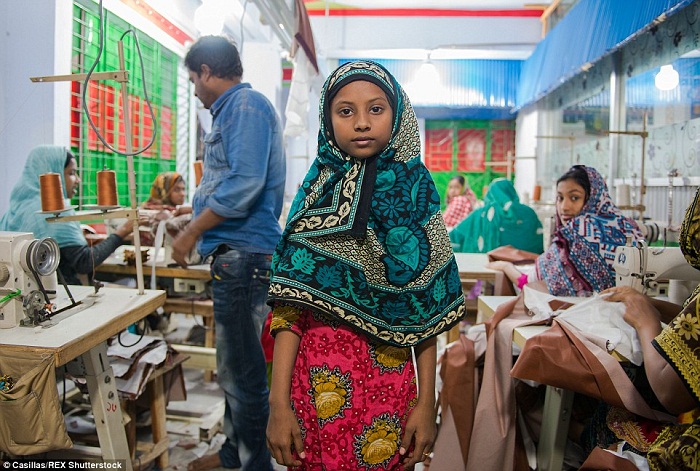
He said: `Inside these factories garment workers work six to six and a half days per week from dawn till far after dusk for a minimum wage. The workers from these factories sleep inside or rent rooms next to these factories.
`They come from villages to cities seeking for employment and dreaming of a better life,` he said.
It is thought there are about a million children aged 10 to 14 working as child labourers in Bangladesh, according to UNICEF - but the number is far higher when the age band is expanded.
But they end up scraping a living - that doesn`t much exist outside of work. In one photograph, Casillas shot boys showering at the factory, which is where they eat, wash and sleep due to workload.
Garment employees work either 6 or 6.5 days per week from dawn till far after dusk for a minimum wage. They sleep inside or rent rooms next to the factories.
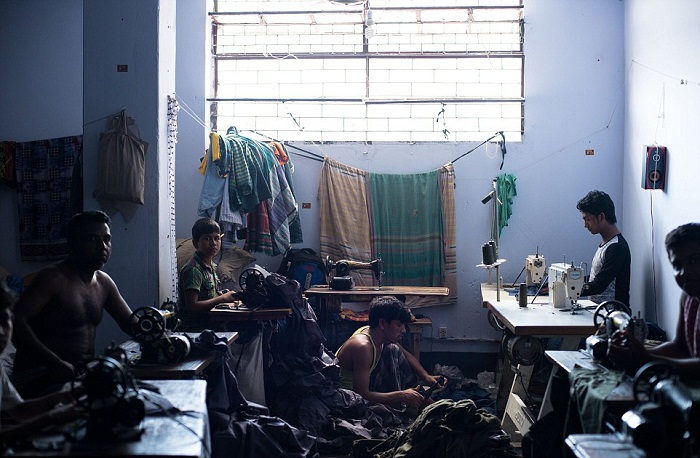
A young worker at her working station removes extra stitches from blue jeans. It is thought there are about a million children aged 10 to 14 working as child labourers, according to UNICEF - but the number is far higher when the age band is expanded.

A young garment worker at his working station. His work consists of stitching labels to blue jeans.
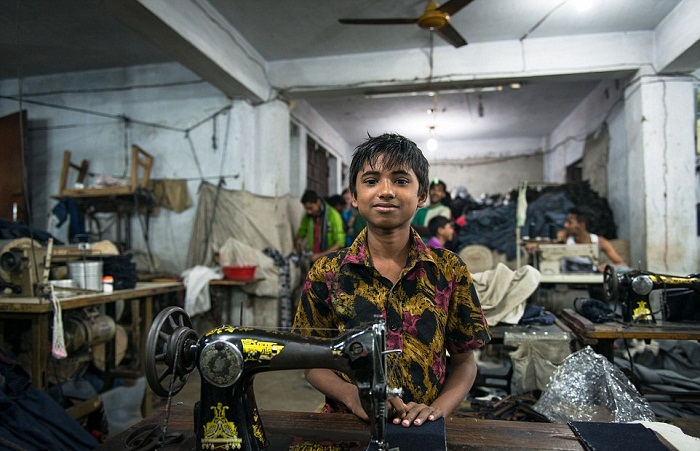
Bangladesh`s garment industry is the second-largest exporters of textiles after China and has a notorious fire safety record.
More than 1,100 people died at a garment factory fire outside Dhaka in 2013 in one of Bangladesh`s worst industrial accidents.
And the working conditions and facilities are much worse than most formal export oriented factories - which are inspected regularly.
Children and adult employees earn as little as £6.50 a month, or less than 800 Bangladeshi taka. At best, they can expect 1,950 taka (£16) .
That is significantly less than the 5,300 taka (£41.80) minimum wage for entry level garment workers set by the government in the wake of the Rana Plaza disaster, in which more than 1,100 people died, mostly women.
Shanta, 11, (pictured) has worked in an informal garment factory for one year. She is originally from the Madaripur District, Bangladesh.
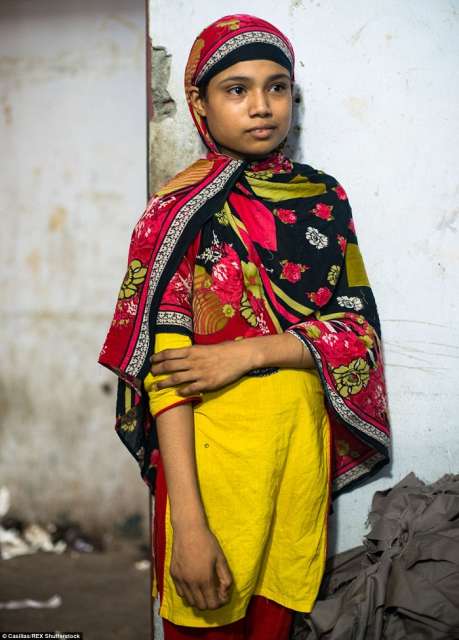
An informal garment factory located on the outskirts of the center of Dhaka Beyond the label.
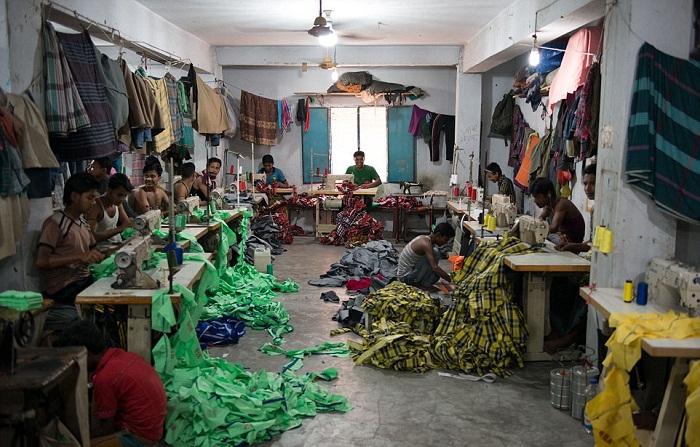
Hardwork: On daily average a worker can sew more than a thousand pieces.
